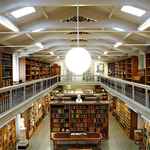Vossius Seminar: Cold War Science in the Low Countries
- Date
- 7 October 2024
- Time
- 15:00 -17:00
- Location
- Artis Library
Program:
15-16h:
The Politics of Big Science in a Small Country: Nuclear Research in Belgium 1980 – 2020
Hein Brookhuis (UvA/ARCNL)
In the historiography of science, the rise of nuclear research has primarily been understood in the context of the Cold War, focusing on transatlantic relations between Europe and the United States. European governments, often in close association with national industry, established national nuclear research centers. As case in point, the establishment of the Belgian Nuclear Research Centre (1952) has primarily been explained through the close relations between Belgium, the United States and the uranium mines in Congo. By the 1980s, however, the relevance of national nuclear research centers was strongly questioned, often leading to their demise. This talk will investigate the agency of research directors and researchers themselves in the period from 1980 to 2020, exploring how they dealt with the changing social, economic and political context of nuclear research. While this history has often been covered from the perspective of governments and the public perception of nuclear energy, there was also a political dimension that played out within the research centers. In particular, I will highlight the interlinkage of European science policy, material culture and institutional identity by putting the management of large scale research reactors at the heart of this analysis.
16-17h:
The secrecy and science of Cold War Atoms in the Netherlands and Norway
Machiel Kleemans (UvA)
Nuclear physics developed from an open, collaborative enterprise before World War II to a closed, largely secret science during the war. Nuclear science and technology remained classified in the early years of the Cold War. In Europe, some of the smaller countries wanted to participate in nuclear physics but were stonewalled by the Anglo-American nuclear monopoly. The Netherlands and Norway, however, both possessed important materials – uranium and heavy water respectively – that are needed to construct a nuclear reactor. They used these materials to jointly construct a reactor in Norway 1951. Also, a uranium enrichment capability was realized in the Netherlands in 1953. Both were developed before nuclear technology became more widely shared through America’s Atoms for Peace Program. This makes the Dutch-Norwegian program a unique case to study the effect of England and America’s early policy of secrecy. Secrecy was not static, and I will take the shifting boundary of secrecy as a place to investigate power relations in the context of Cold War science. How these European countries dealt with secrecy and navigated the postwar power field will give a better understanding of the, often underestimated, significance of secrecy in science. I will show how, despite secrecy, knowledge circulation was enabled though networks that were at the same time scientific, diplomatic and personal.
